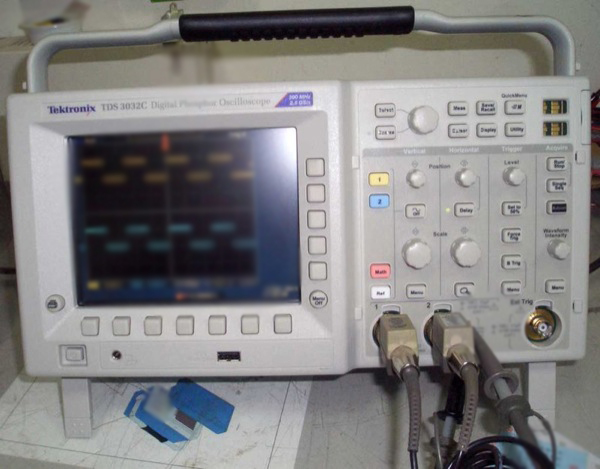Used TEKTRONIX TDS 3032C #157328 for sale
URL successfully copied!
Tap to zoom


ID: 157328
Oscilloscope
Specifications:
300 MHz bandwidth
1.2 ns rise time
2 input channels
Includes external trigger input
2.5 GS/s.
TEKTRONIX TDS 3032C is a high performance oscilloscope that is ideal for a variety of electronic engineering applications. It is a two-channel instrument with a bandwidth of up to 200 MHz and is capable of sampling up to 500 MS/s (500 Megasamples per second). This powerful digital storage oscilloscope (DSO) features an adjustable trigger level and an adjustable time base to provide precise triggering of signals from both internal and external sources. TEKTRONIX TDS3032C is equipped with a 5.7-inch color LCD display, allowing for easy viewing of the waveforms and other data. The device also features several acquisition modes for sampling signals, including peak detect, sample, envelope, and average. Additionally, it has a zoom function to display the waveform at different time scales, and trigger modes such as auto, normal, and single. TDS 3032C can be used to measure and analyze a wide variety of signals, including sine, square, triangle, sawtooth, pulse, arbitrary waveforms, and more. It can be used to measure voltage, current, frequency, duty cycle, and phase at ranges of up to 40 Vpp, 200 mA AC/DC, 1 MHz, and 1 degree. There is also an FFT (Fast Fourier Transform) capability to analyze frequency components of complex waveforms. TDS3032C can be connected to computers running Windows and Linux operating systems for the purpose of data acquisition, waveform display, and printing. It also supports Windows-based software for waveform acquisition, signal analysis, and system control. TEKTRONIX TDS 3032C is designed and manufactured to the highest standards, and is offered with a three-year warranty. It is supplied with several accessories, including a power cord, two 5-mm probes, a user manual, and a software CD. This device can be used for a variety of applications, such as circuit troubleshooting, system debugging, precision measurement, testing of high-speed signals, and lab experiments.
There are no reviews yet